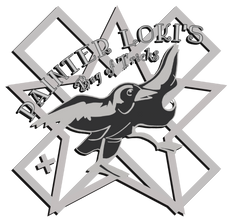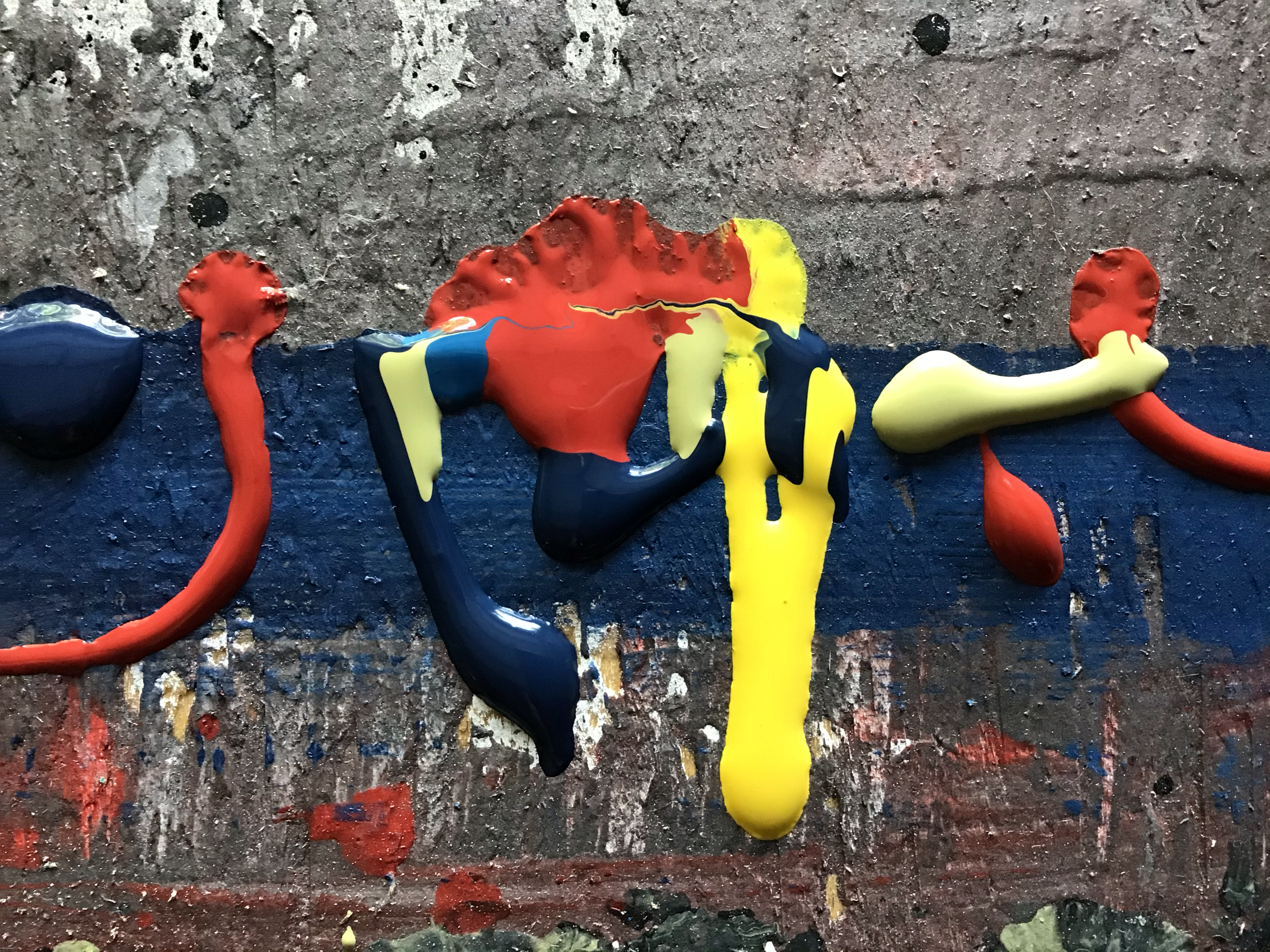What is art? Honest Art and Art Created Through the Medium. An analysis by the artist.
What is art? Answering this question is akin to trying to answer the question,'what is life'? Considering that it took Leo Tolstoy several decades of thought on the subject before he could articulate an answer (that even partially satisfied himself) should indicate the depth of the question. It is necessary however, to have a working definition of art before any further discussion of it can take place. I will attempt here to posit my thoughts on this subject.
This definition of art is reflective of my primary approach to creating. It is my way of defining and qualifying my own degree of artistic purity. I am primarily a painter, so I am foremost approaching this broad topic from this perspective, although I believe that it applies to any medium. This is by no means a final definition, and I am certain that other artists have a drastically different opinion, perhaps even being diametrically at odds with my own. I just hope that what I write will be articulated well enough to be helpful in understanding the topic, and perhaps be useful to someone else in their own creative endeavors.
At a fundamental level, art (as a verb) is a means by which we gain a wider comprehension of the experience of being through a creative process of discovery. In the process of creating we are allowing ourselves access to information extracted out of potentiality in a manner that is as unfiltered by our biases and prejudices as possible. The capture of this information is then organized into, and onto the art (as a noun) as a record of the experience. It is in the initial phase that the art begins; the point of capture of whatever it is that comes forth. This is the foundation of creativity, the arrival of something new in a substantial, yet still wild and undefined state.

The raw art is then developed into something more 'refined' using a craft. Art is the interaction of the artist doing the work of both pulling 'noise' out of potential (higher state of entropy) and developing a 'signal' (lower state of entropy) through one or multiple mediums. Note: 'Entropy' in this and future examples is used as defined in Information Theory.
The craft level of the process is necessary for the 'wild' to become 'cultivated' into something that is civilized, intelligible, and that has value. It is through craft where the message is distilled from the background of the experience. This level is also where the total potentiality of the work dramatically funnels into something realized. Consider a young child's early attempt to create a picture. What does it typically turn out like? A jagged, colorful, scribble applied with such force as to nearly rip the paper upon which it was laid. This is art. It has yet to be cultivated through a craft but is art in a free, raw, and simply complex form.
The degree to which an artist's craft is applied to any particular work of art will fall on a theoretical range of pure potential (High Entropy), to an utterly static equilibrium (Low Entropy); or pre-conception, and post-death if you will. Obviously, apart from the most daring artists, physicists, and philosophers, we are generally only concerned with art that is tangibly realized within the range of what can be experienced and manipulated through the five senses.
A possible depiction of this artistic process is demonstrated as:
potential <--> art(v)/noise <--> craft/signal/subject --> art(n) --/ -> value/meaning
high entropy >>>>>>>>>>>>>>>>> mid entropy >>>>>>>>>>>>>> low entropy
In this example the 'signal' or 'subject' of the art(n) arrives as a RESULT of an artistic process. It is determined from the creative act itself, and is the product of the fluid, multi directional process of art and craft interacting with each other and with unknown potential. Of note here; the starting point is 'potential', meaning that the process can be initiated at any time, in any place, through any medium, go for as long as it needs to, and in any direction. It is essentially free from rules and laws other than those that are imposed on it by nature. The process is multi-directional; what has been realized can be (and many times is) removed, distorted, or modified in the process of working towards completion. This process of increasing and decreasing entropy throughout the creative process is what leads to the 'character' of a finished work, and further, what distinguishes it from craft alone.
Once the creation is determined complete, what stands is the 'artifact' of the experience, now preserved, even if just momentarily, as a record accessible to the senses. Notice also that the higher faculties of the artist do not come into play until later in the process with the highest faculties only being evoked AFTER the artwork is completed. This is important because to the degree that the higher faculties come into play is by that measure the amount that the artistic process is 'corrupted.' When I use the word corrupt I am using it in Websters 4th definition sense: "4 : to alter from the ORIGINAL or correct form or version". The word should not be taken in any moral or elitist sense, as in fact this higher order corruption is essential to bring the artistic process to an eventual end.
In order for my definition to make more sense it is helpful to look at an example of something that is creative, but not in an artistic sense. Let's consider structural engineering. Unlike the artist, the engineer is specifically looking to avoid high entropy and unknown potential. They are also likely starting with, and largely remaining in, the higher level conscious faculties. The very intellectual human attributes that corrupt the artist's work are what allows the engineer to create something that works as intended with near certain precision.
What would the creative depiction of a bridge design possibly look like?
Need ----> design/calculation <----> prototype ----> construction
mid entropy >>>>>>>>>>>>>>>>>>>> low entropy
By comparison of the two creative processes we can see that while the artist thrives in noise and uncertainty, the engineer finds these elements corruptive, and probably downright dangerous. The engineering starting point is also one that is based on satisfying a defined need whereas the artist is seeking to create something novel with no clear creative goal endpoint.
This process by which I strive to create within is by no means pure or sacrosanct in actual practice. I do occasionally begin a work of art with a notion or subject matter already considered, and I do occasionally consult a reference (photo, model, etc.) as a means to bring about a more deliberate result. Allowing variance and exceptions within the 'process' is also essential for it to remain free from restrictions; the very fact that there is a conceptual process indicates that there are also restrictions, so allowing for deviation from a process insures that it remains not a process, but a maxim.
When I look back (preferably after some length of time) at a completed work of art that I have created, I evaluate not only the aesthetic qualities of the work, but more importantly, the creative qualities. It is here that I can, with a 'level' head, determine how honest I was with the creation. Is the piece reflective of spontaneity? Does it show remnants of the actions involved in it's development? Does it have natural ambiguity? Did it, and does it still, have me wondering 'where did THAT come from?' These are all ways to measure the honesty of the art. In other words, is it ORIGINAL, and by an extension of it, am I original? This is no easy task.
My process as outlined above has come about after decades of creating. It has been an evolutionary process in the minimization of the higher human faculties of reason, logic, intent, and purpose for the sake of bringing something genuinely new into the world. It is an attempt at finding 'truth' in nature, as an artist, and within the phenomenon of existing. It is developmental both creatively and personally as it allows me to uncover motivations and traits that would otherwise never be known, much less understood. It has trained me to better recognize what is genuine from what is imitative in a manner that I still do not fully understand; except, perhaps through the art itself.
It is hopefully more clear to the reader why I referred to certain influences as 'corrupting' to the artistic process. The corrupting forces, when minimized, are required in order for there to exist any meaning to the art (apart from insisting that there is no meaning, essentially artistic nihilism) once it is completed, or for the art to ever be completed in the first place! The corrupting forces left unchecked however, become the primary purpose of the art itself, hence not art at all. What results from a heavily corrupted process (regardless of it's aesthetic or commercial properties) is at best a familiar rendering, and is at its worst propaganda.
I hope that the reader has a better understanding of what I am referring to when I speak of 'art through the medium' or 'honest art'. I also hope that this has expanded the knowledge of the reader, and offered a new way of understanding art. If this essay has opened up new questions about art the artistic process and how art fits into our world, I will consider this essay to be a success. I will refer back to this article in future discussions on this most amazing and idiosyncratic subject.
Happy exploring! - Painter Loki
For additional insight into this topic I have found these books insightful, enlightening, and invaluable:
"What is Art?", Leo Tolstoy, 1897;
"Aesthetics, Lectures on Fine Art", G.W.F. Hegel;
"Legend, Myth, and Magic in the Image of the Artist", Earnst Kris and Otto Kurz, 1934
Copyright Silver Palm Publishing, 2023

